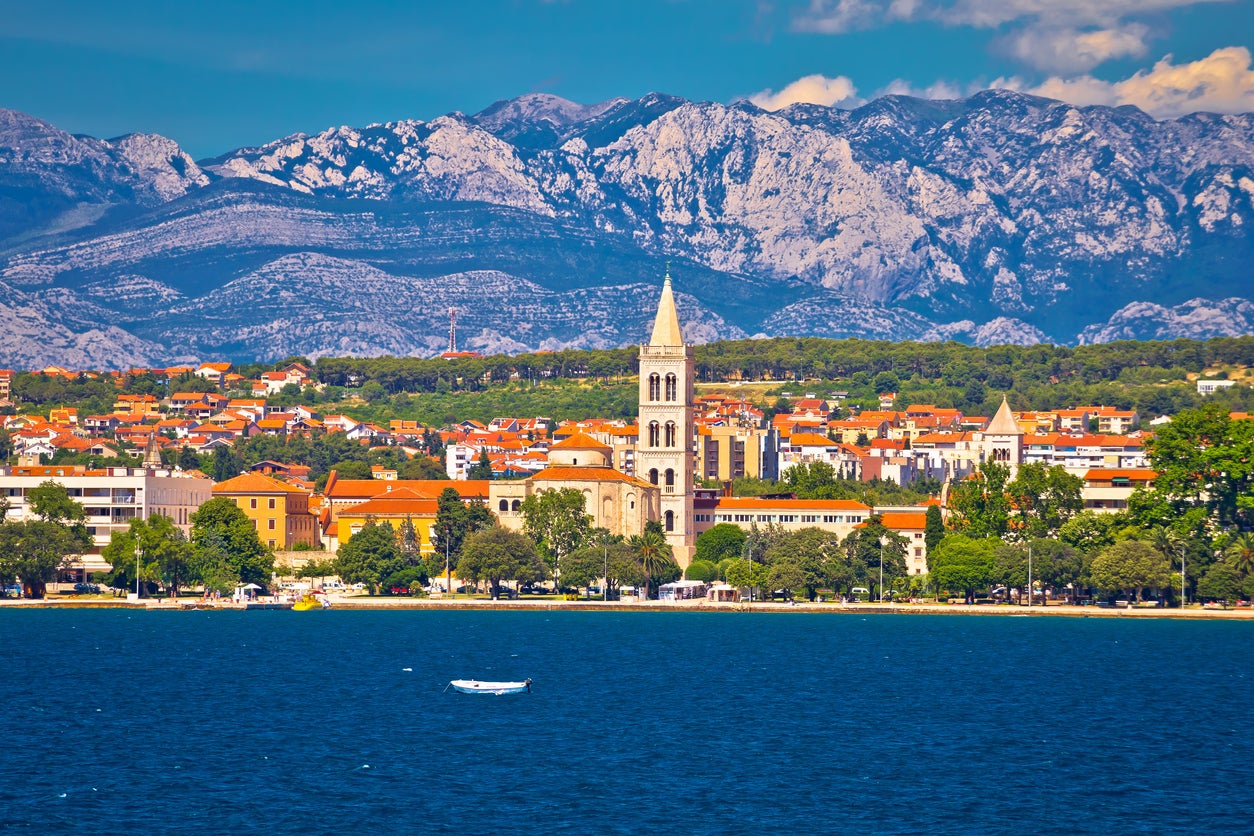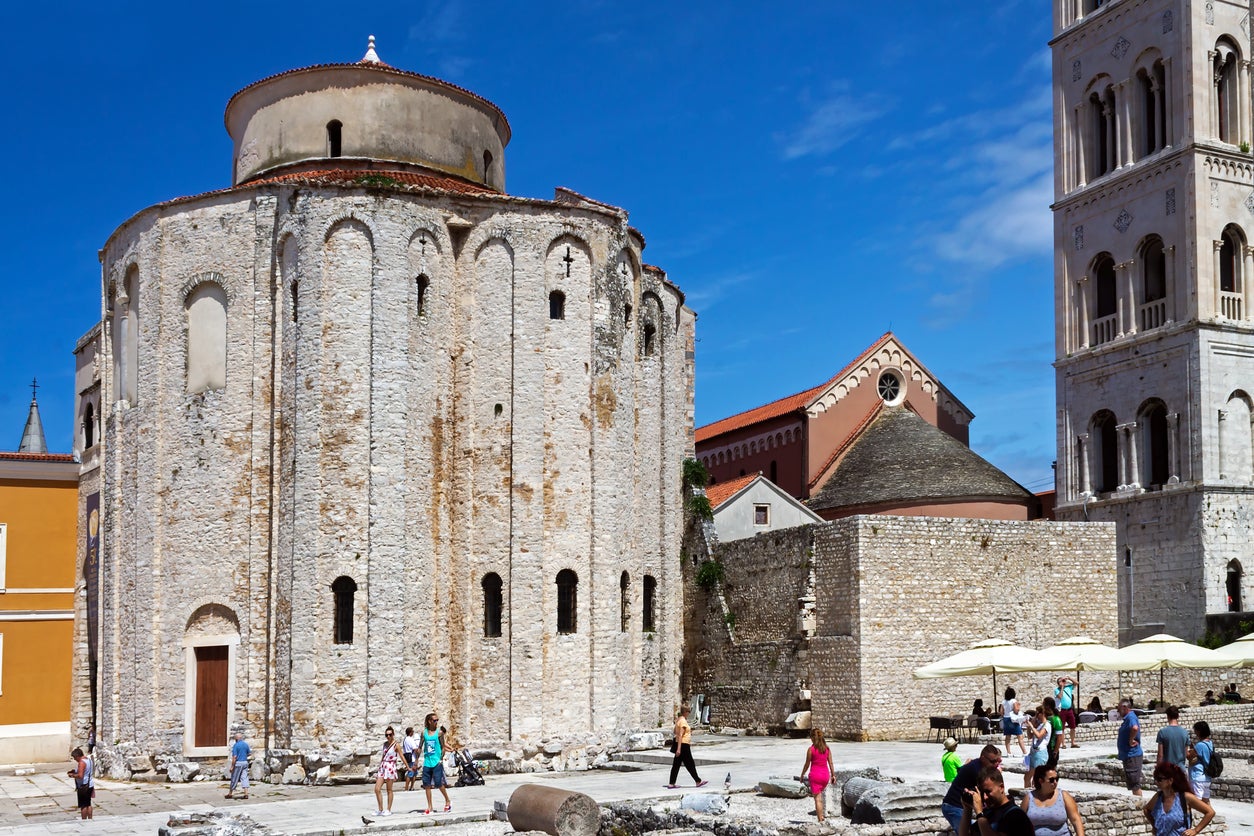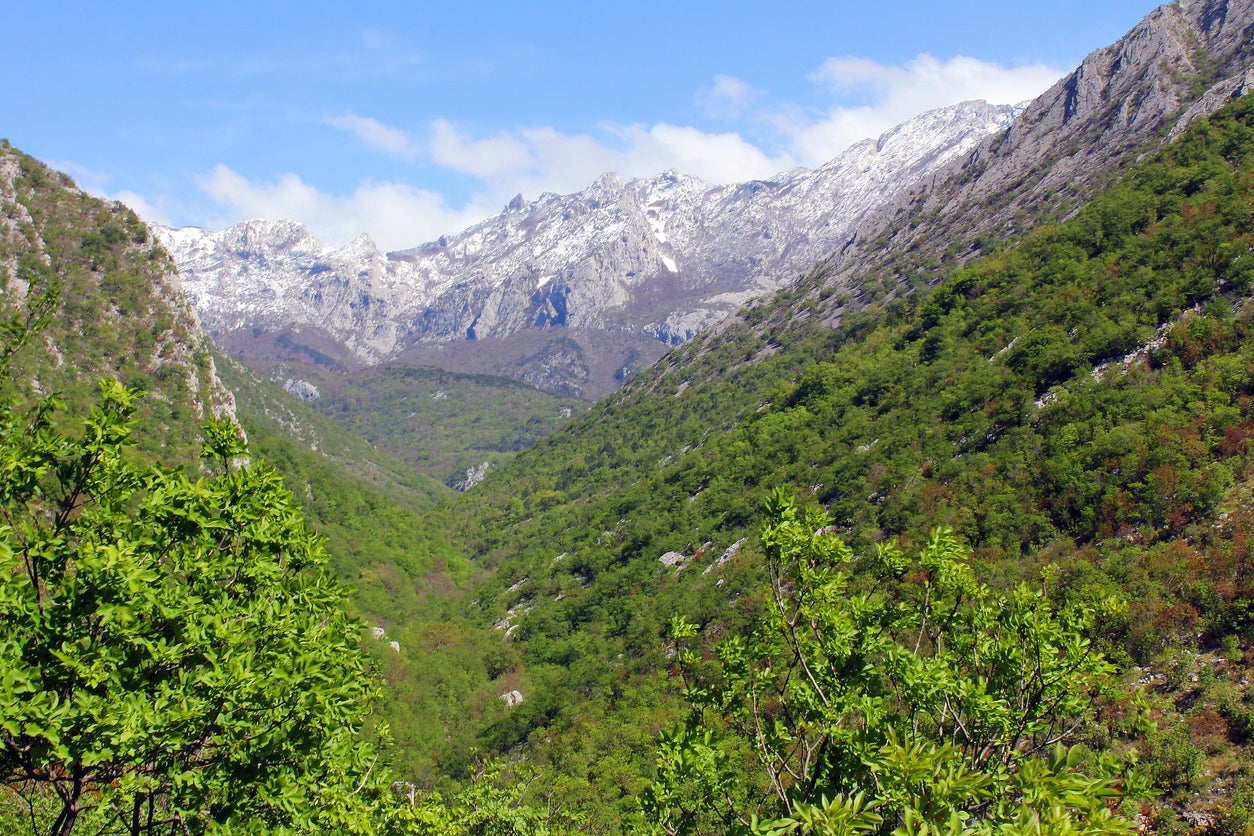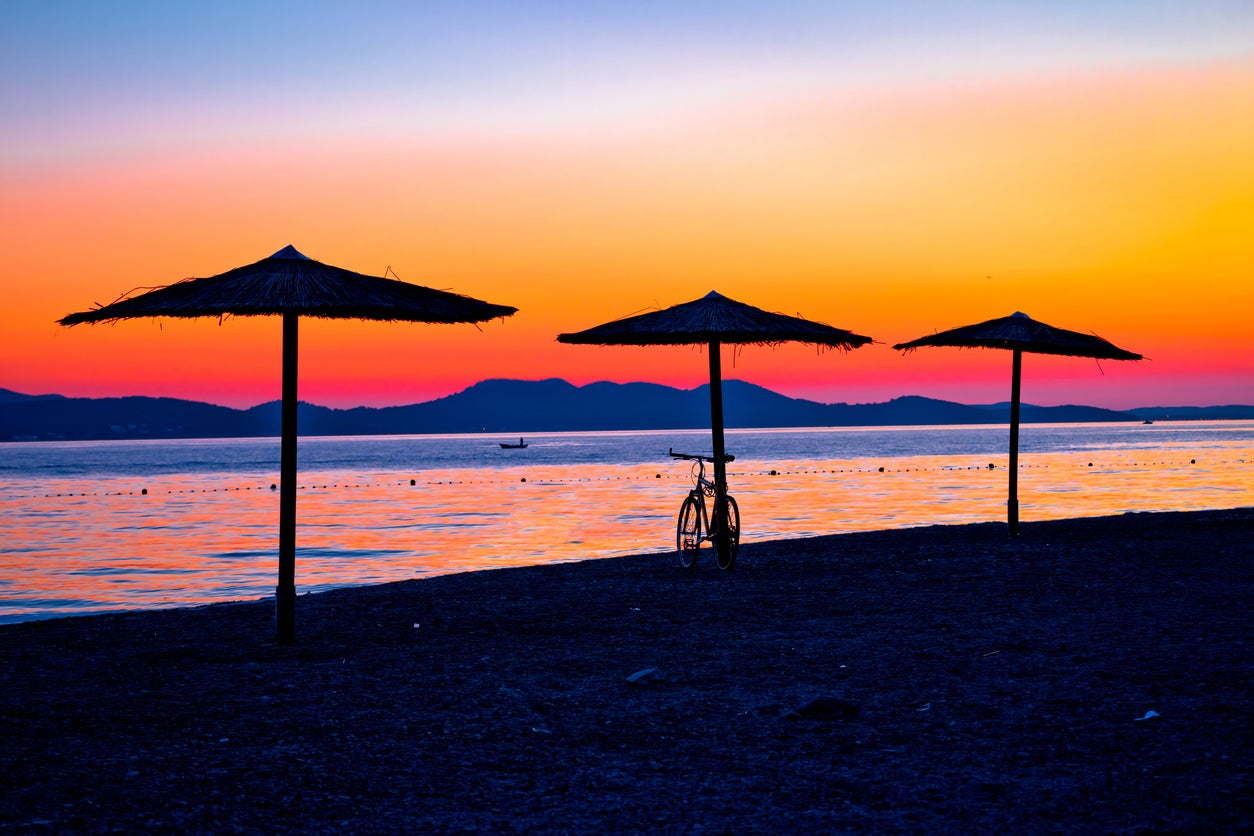Zadar city guide: Where to eat, drink, shop and stay in Croatia’s coastal gem
The oldest continuously-inhabited city in Croatia is the newest place to be see

Your support helps us to tell the story
From reproductive rights to climate change to Big Tech, The Independent is on the ground when the story is developing. Whether it's investigating the financials of Elon Musk's pro-Trump PAC or producing our latest documentary, 'The A Word', which shines a light on the American women fighting for reproductive rights, we know how important it is to parse out the facts from the messaging.
At such a critical moment in US history, we need reporters on the ground. Your donation allows us to keep sending journalists to speak to both sides of the story.
The Independent is trusted by Americans across the entire political spectrum. And unlike many other quality news outlets, we choose not to lock Americans out of our reporting and analysis with paywalls. We believe quality journalism should be available to everyone, paid for by those who can afford it.
Your support makes all the difference.Three thousand years in the making, Zadar is a mixture of heritage meets the here-and-now. There are ancient Roman streets and harbours used since antiquity; isolated coves, near-empty national parks and insanely-gorgeous vineyards, too. Venetian-era cathedrals and chess board castles, without the gut-punch of Split or Dubrovnik’s Game of Thrones crowds. In true Croatian style, there are memorable boat trips to islands where you can play Marco Polo. It is an area that’s monastic in its modesty, and yet a world apart from the big-hitting Croatia everyone has recently cottoned on to.
This being the Adriatic, after all, serious eating and wine drinking still come first. Dalmatians have a love affair with coffee and Zadar’s pedestrian old town is hip-to-hip with cobblestone cafes, snack stops and umbrella-shaded espresso and wine bars. Besides that, the city delivers big with festivals and is near-perfect for weekend breaks all year round.
The Independent’s hotel recommendations are unbiased, independent advice you can trust. On some occasions, we earn revenue if you click the links and book, but we never allow this to affect our coverage.
What to do
Step back in time in the Old Town
Many of Zadar’s most arresting landmarks are hunkered away in the tangerine-roofed Old Town, so dedicate at least half a day to wandering. You could start puzzling over the churches, colonnades and columns that dot the backstreets, or explore the nooks of its Unesco-listed fortified walls and Arsenal – it’s an area so compact you can absorb centuries in minutes.
In particular, you’ll love the ruins of the Roman Forum, built by Emperor Augustus, Anastasia’s Cathedral and the 9th-century Church of St Donatus.

Applaud a Hollywood-worthy sunset
There is no greater time to appreciate Zadar’s easygoing spirit than at dusk. Not many seafronts can claim to have inspired poets, writers and filmmakers, but this one has, among them Alfred Hitchcock, who described the cinematic sundown here as the best in all his travels. He holidayed in Zadar in 1964 and it’s easy to imagine him making a cameo today, discreetly promenading among the boatmen and hand-holding lovers.
A stroll along the waterfront is a multi-sensory experience, too. Hidden beneath the cascading steps is local architect Nikola Basic’s one-of-a-kind tubular Sea Organ, which gives a voice to the gently-sloshing waves. Listen closely and you’ll hear a mix of whale song and banshee whimpers that soundtrack the sun dipping below the horizon like a coin into a slot.
Climb, hike or bump about on a mountain safari
The impressively ragged and rugged Paklenica National Park, 30 minutes from Zadar, has been responsible for weary limbs since the days the Romans crossed its ridgeback in sandals. Nowadays, holidaymakers are few and far between, but a mountain trip is a local rite of passage and locals remain fiercely proud of the labyrinth-like limestone range. Biking and hiking are summer traditions, while some of Croatia’s most accomplished climbers learned their bouldering and rappelling skills on its scree slopes.

Of the myriad ways to experience the park, the easiest for those tight on time is with Velebit Jeep Photo Safaris, which scoots you off-road from Starigrad to a mini Grand Canyon, snow-dusted summits and a mountaintop farm for lunch in the company of hardy shepherds and grazing goats.
Take a crash course in glass blowing
The Museum of Ancient Glass is a tribute to the artisans who once put Zadar on the map. The building, set against the putter of boat traffic from adjacent Jazine Marina, is a 19th-century palace, while its galleries hide a trove of glassy treasures that date back hundreds of years. No one tells this story better than local virtuoso and resident puffer Marko Štefanac, who works the top-floor studio, blowing glass bubbles as if they were balloon animals. In the gift shop, you can take home the ones he made earlier.
Island-hop before the secret gets out
What better way to plug into Dalmatian time than a trip to the islands that shelter Zadar from open sea. Split has hedonistic Hvar, Dubrovnik has pine-covered Mljet, but Zadar has heart-stopping hideaways most tourists would never dream of reaching.
To the south, the islands of far-flung Kornati National Park are pumice-topped and peaceful. Here, you can find bafflingly-empty beaches and spot dolphin pods breaching. Closer to Jazine Marina are the sunbaked islands of Pasman, Iz and Dugi Otok, all easily-accessible by speedboat. Fittingly for a city so indebted to the sea, it’s an eye-opener to stop-off at a fish farm on Ugljan to see a frenzied tuna shoal in action.

Where to stay
If you like your city break with a dollop of beach time, head 15 minutes north to Hotel Iadera, a four-star beachfront property that meshes holiday staples (pool, spa, mini-golf and tennis) with Jetsons design. Inside, it’s all bendy glass corridors and expansive views of the Adriatic. Rooms are eccentric, too, with sinks and bathtubs integrated around the beds. Doubles from £112.
Closer to the action – indeed, so close it hugs the Arsenal – is Hotel Bastion. It’s a swanky boutique with harbour views built on the remains of a former 13th-century Venetian fortress. There’s a cracking restaurant and spa, plus parasol-shaded terrace for slugging back cocktails in the sun. Doubles from £125.
Where to eat
Book ahead for a table at Kornat, a few minutes’ walk from the Roman Forum. Don’t expect tweezer-touched plates of wild flowers and foam; do expect a menu heavy on herb-fed lamb, salty pork and marinated seafood that chips away at any good intentions to just order a light meal.
A stalwart of the slow food scene, Pet Bunara is a go-to for seasonal ingredients such as olives, figs and prsut, air-dried Croatian prosciutto. For tradition, stick to the pasticada, a belly-hugging stew doused in wine.
Planning an April visit? Don’t miss Zadar’s implausibly-good Tuna, Sushi and Wine Festival. Nigiri, maki and temaki may be alien to most on the Adriatic, but the reward is melt-in-mouth bluefin tuna sashimi and tuna belly slivers as good as any you’d find in Tokyo. Don’t believe us? Ask the Japanese who earmark the date each year.
Where to drink
If you’re like most people, you’ll find the idea of drinking Croatian wine ridiculous. But the country’s glossy posip, malvazija, bogdanusa and grasevina grape harvests have been turned into complex, rewarding wines since the ancient Greeks first got a sniff. Kraljevski Vinogradi, plum in the middle of 300 geographically-defined wine areas, offers finely-tuned tours and tastings.
Drink the coffee. Few places in Europe have such a relentless espresso culture as Croatia and it’s the easiest way to strike up a conversation. Everything – from family catch-ups to first dates to business meetings – happens over a cup of Joe. Try speciality roaster Cogito Coffee, so good it’s now expanded to east-coast America and Dubai.
Another hyper-local spot is open-air The Garden Lounge. Those in-the-know knock back heavily-iced glasses of Maraschino, the cherry-flavoured liqueur first distilled in Zadar in 1821. Don’t peak too early: late afternoon is for “fjaka” (Dalmatia’s zen state of aspiring to do nothing) and bars only spark to life later.
Where to shop
Downtown, timing is just right for shopping at dozens of boutiques squirrelled away in the alleys. In particular, Natura Zara is a one-stop souvenir heaven, touting olive oils, fig jams, honeys and wine. For high street brands, take a taxi to out-of-town mall City Galleria.
Design highlight
The 22m-wide glass Sun Salutation is arguably the city’s most adored spot. It’s a rainbow-coloured disco dance floor meets solar panel, embedded into the waterfront promenade and created to deliver a quasi rock concert light show each night after dark.

Nuts and bolts
What currency do I need?
Euros.
What language do they speak?
Croatian.
Should I tip?
10 per cent.
What’s the time difference?
One hour ahead.
What’s the average flight time?
Two-and-a-half hours from the UK; Delta flies from the US to Split in 11h 52m with a stopover in Frankfurt.
Getting around
Compact and easy to navigate, Zadar is best explored on foot. Otherwise, use the 12 bus routes that cover most of the city.
Best view
On the promenade, at sunset, in earshot of the Sea Organ. Preferably with an iced aperitif.
Insider tip
Can’t find the perfect flight from your nearest city? Consider flying into Split instead. It’s 1hr 45mins to the south via a fast motorway.
More information
Croatia.hr
Join our commenting forum
Join thought-provoking conversations, follow other Independent readers and see their replies
Comments